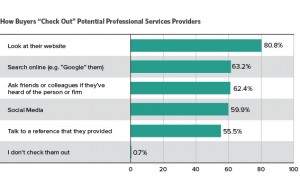— May 20, 2019
Any small business owner knows that running a small business isn’t as easy as it looks. The common misconception is that since there are fewer things to take care of, the operational and management tasks aren’t that challenging. But that couldn’t be further from the truth.
In fact, running a small business is much harder in some aspects, especially because of budget constraints and workforce shortage. You may find it extremely hard to stay organized and keep things on track with so much on your plate. From scheduling meetings to managing vendor invoices, it can be overwhelming to say the least.
The good news is that there are plenty of automation tools that small businesses can use to save time and manage their tasks more efficiently. Check them out.
#1: ActiveCampaign
ActiveCampaign is an all-in-one marketing automation tool that also comes with email marketing and sales and CRM functionalities. The platform helps you keep all your customer data organized and automate your sales processes.
You can also automate personalized emails triggered by certain actions. I find this feature extremely helpful for sending out follow-up emails to nurture leads and reach prospects at all the vital stages of the sales funnel. The best part is that the rates are fairly low even for businesses with serious budget constraints.
#2: PurchaseControl
PurchaseControl is an automation tool that you can use to streamline your procurement and purchase order processes. It lets you create an automation workflow so you can easily keep track of the entire process. You’ll also be able to automate the process of sending out purchase requisitions for approval.
This is extremely useful to keep everything organized and on track because you won’t have to waste your time on repetitive tasks or accidentally repeat processes. Having all the relevant information in one place makes it much easier and faster to process vendor invoices for payment.
The platform lets you develop a paperless procurement process that’s much easier to organize and keep track of. You won’t have to dig through piles of paperwork to find what you need. It also helps you avoid unnecessary wastage, reduce paperwork, and prevent unapproved purchases. It even lets you keep track of your budget and spending.
#3: Deluxe Payroll
For small businesses with two or more full-time employees, one of the biggest challenges is managing payroll. At the same time, it’s not always viable to take on another full-time employee just to handle payroll. So I suggest small businesses start automating their payroll management processes with the help of Deluxe Payroll.
This is a platform that connects you with a dedicated payroll specialist to develop a system that’s ideal for your company. It also ensures that you are in compliance with the relevant state and federal regulations. This will save you a huge chunk of time to focus on other aspects of the business.
#4: Trello
Assigning tasks to the right team members and managing task scheduling can be a major challenge because it’s so hard to keep track of everything. You could accidentally have two people working on the same task, while another task gets missed.
I personally experienced the same problem when I started my agency. I was working with a few clients and some freelancers. It was extremely challenging to keep track of which freelancer was working on which project, which tasks were more urgent, etc.
Using Trello, I managed to sort out this issue and everything has been smooth sailing since. Trello lets you create multiple boards for your projects and clients, where you can easily organize every detail. You’ll be able to assign a team member to a specific task, upload briefs for those tasks, and keep track of how the task is progressing.
#5: Calendly
As someone who runs a small business, you’ll have the occasional client appointments or critical business meetings. I know how hard it is to keep track of all of these obligations and how easy it is to accidentally get double booked due to miscommunication or because you missed a single email.
With Calendly, you don’t really need an assistant to help you manage your schedule. It’s a very simple automation tool that lets you schedule meetings and appointments in a more organized fashion.
You will no longer need to send emails back and forth to decide on the best time to schedule a meeting, appointment, or phone call. All you need to do is set your availability on the tool and send an email invitation with an embedded link.
The recipient will be able to view your availability calendar and select which date and time works best for them. The tool will then automatically add the event to your calendar and you’re set.
#6: Buffer
If you want to build your presence on social media, you need to update regularly and publish posts when your followers are most active. But as you already know, it’s difficult to keep track of posting schedules and publish the right posts at the right time every time. This is especially challenging for small businesses that may not have a dedicated social media team.
Buffer simplifies that process for you by letting you schedule your posts for different social media platforms and automatically posting them at the right time. So you’ll be reducing a lot of manual work and saving time in the process, giving you the freedom to focus on other important operational tasks.
Further, you can use Buffer to analyze how your social media posts are performing. This is a great way to understand what works with your audience and what doesn’t. You’ll be able to optimize your social media strategy based on these insights.
#7: FreshDesk
Bad customer service can be detrimental to your whole operation. It is especially harmful for small businesses because they already have a limited customer base as it is.
So it’s crucial to provide quality customer service as best as you can. This includes keeping track of their issues and complaints, and addressing them on time.
Tools like FreshDesk will help you set up a ticketing system so you can easily manage every single customer issue or complaint. You can then create pre-formatted replies to common questions so you can quickly provide relevant responses consistently. Besides this, you can save time by automating some of the repetitive actions.
Final Thoughts
These are some of the essential automation tools that can help your small business save time. You can use them to automate repetitive tasks, streamline your processes, and boost your efficiency in general. Know of any more automation tools that can help small businesses save time? Let us know in the comments.
Business & Finance Articles on Business 2 Community
(15)






